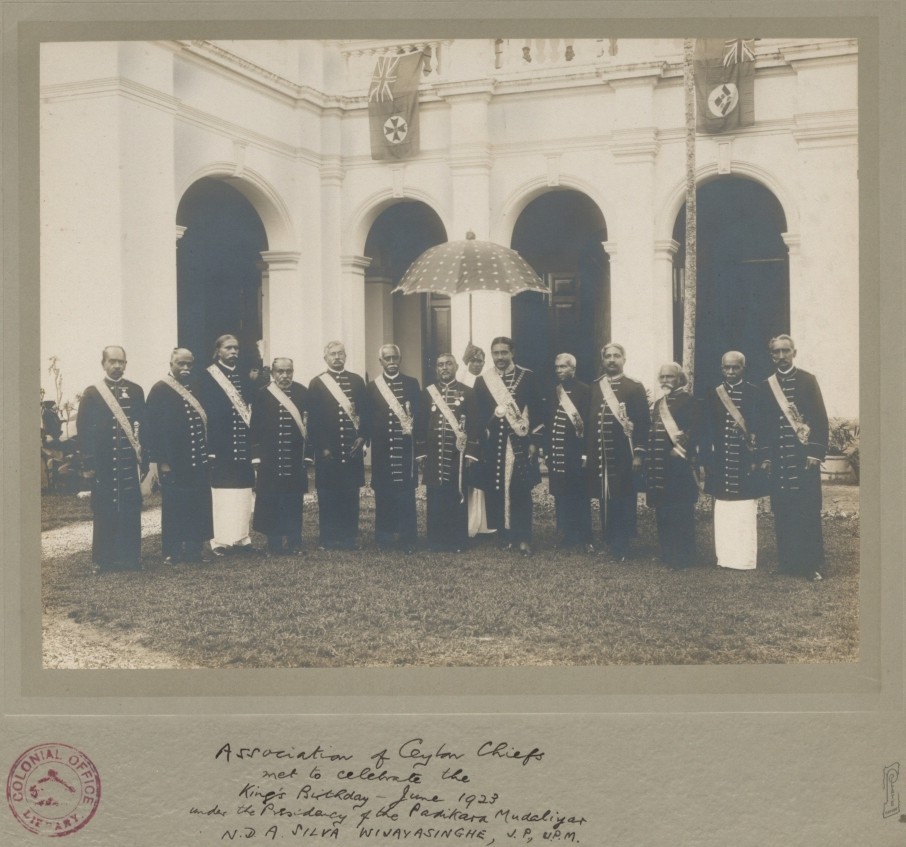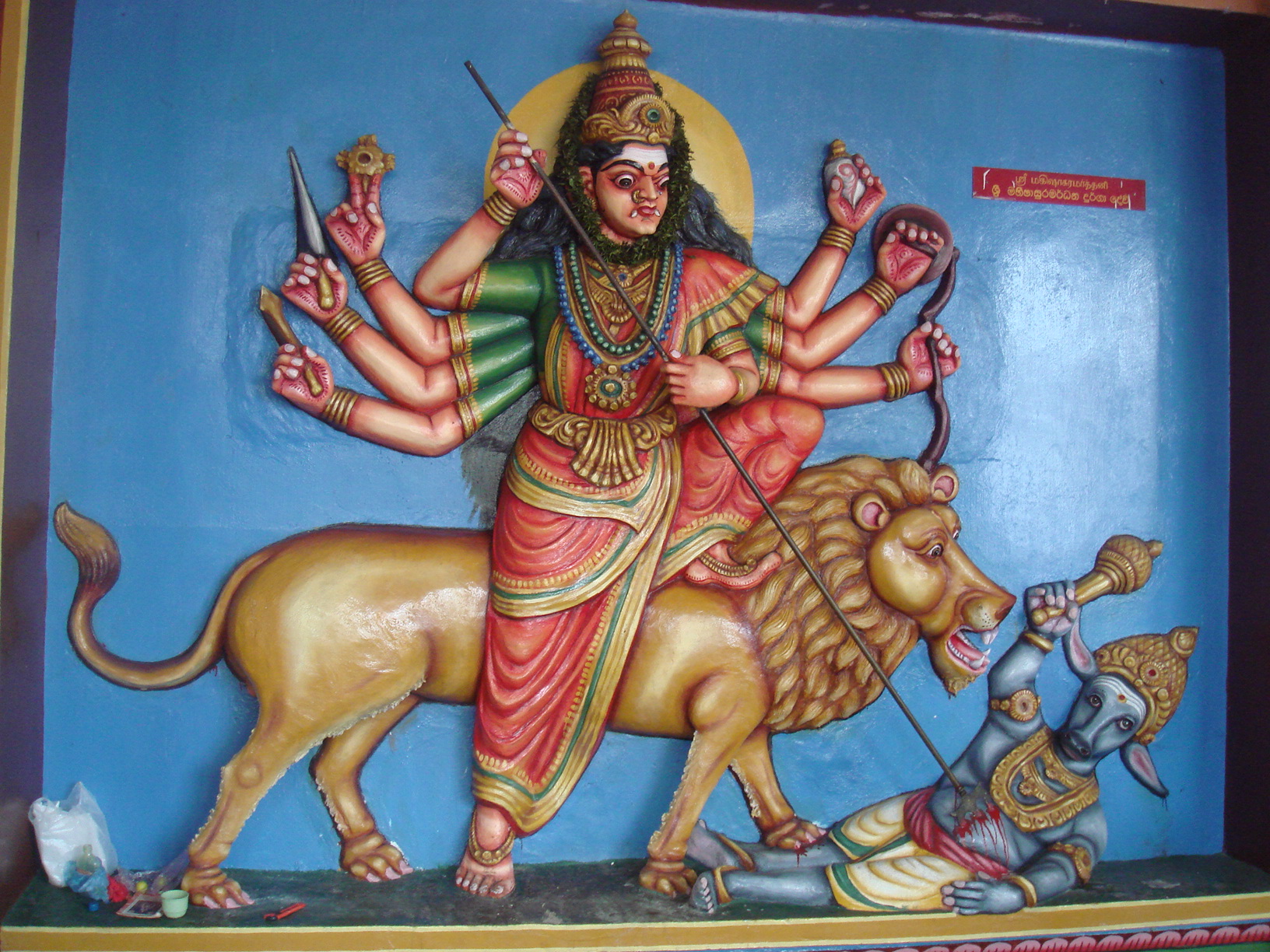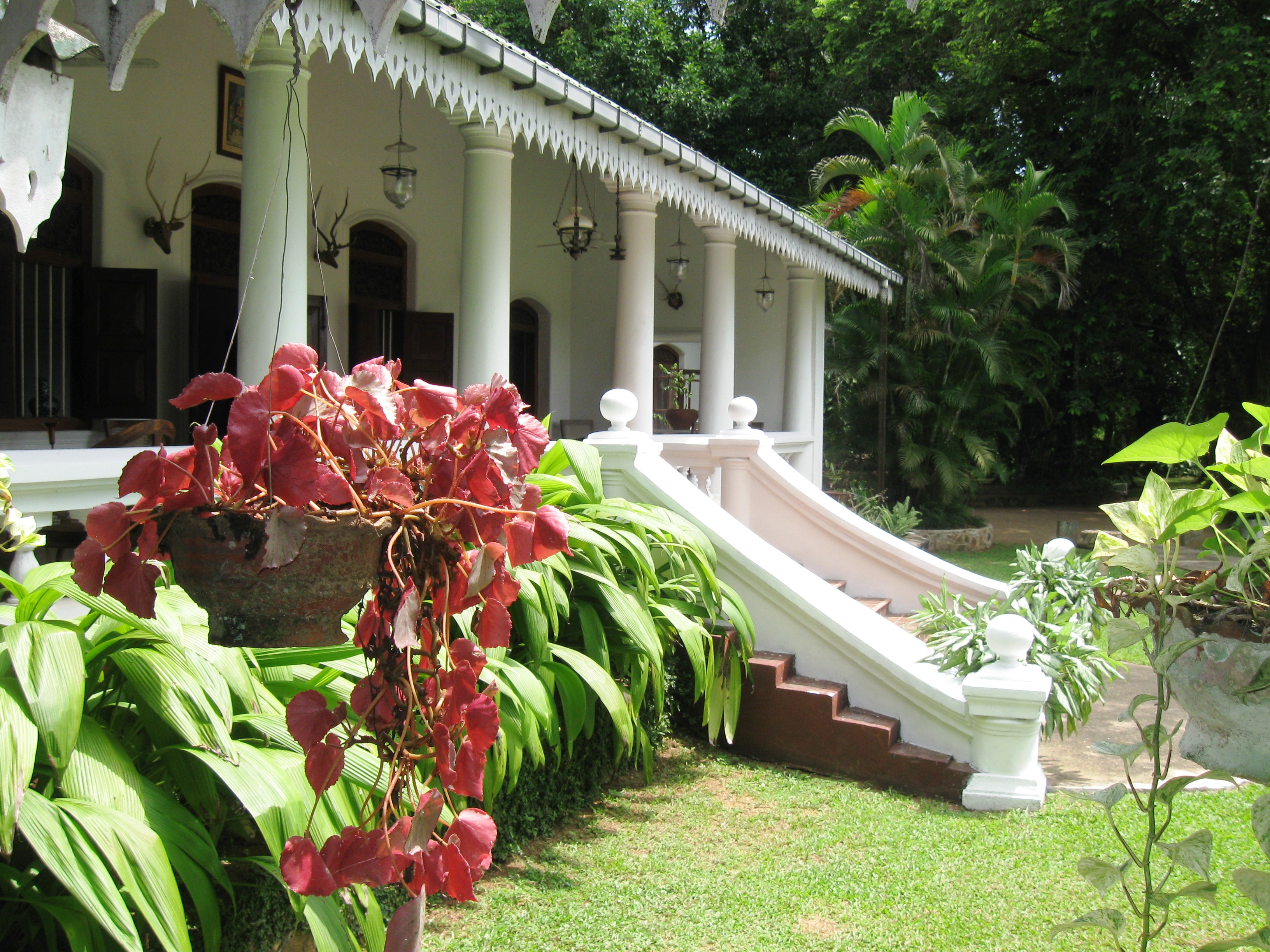|
Arachchi
Arachchi ( si, ආරච්චි) was an influential post in the native headmen of Ceylon, native headmen system in Ceylon (Sri Lanka) during the colonial era. Appointed by the Government Agent (Sri Lanka), Government Agent, the holder had much control over the people of the area and wielded quasi-judicial powers since he was responsible to keep the peace, carry out revenue collection and assist in judicial functions. Appointments were non-transferable and usually hereditary, made to locals, usually from wealthy influential families loyal to the British Crown. Arachchi was the additional term used to refer to the Peon, Senior Peon in a supervisory role of a government office such as a Kachcheri or a District Court. History The post was in existence before the Colonial Rule of Sri Lanka (Ceylon). After the coastal areas were taken over by the Colonial Rulers i.e. Portugal, Portuguese, Netherlands, Dutch colonial rule and finally the United Kingdom, British, they retained the post ... [...More Info...] [...Related Items...] OR: [Wikipedia] [Google] [Baidu] |
Native Headmen Of Ceylon
Native headmen system was an integral part of the administration of the island of Ceylon (now known as Sri Lanka) under the successive European Colonialism, colonial powers, namely the Portuguese Empire, the Dutch East India Company and the British Empire. Native headmen or leaders were appointed by the European colonial administrators to function as intermediates between the Europeans and the native populous. During different periods through this system these headmen functioned in military, policing, Administration (government), administrative and ceremonial capacities. They served as translators, revenue collectors and wielded quasi-judicial powers. Much of the system evolved and changed over time until some of the last vestiges of it were removed in the post-independent Ceylon. The members of this group formed a unique social group called the Sri Lankan Mudaliyars and associated with older Radala caste. History Origins Mudaliyar is a South Indian and Tamil language, Tamil n ... [...More Info...] [...Related Items...] OR: [Wikipedia] [Google] [Baidu] |
Native Headmen Of Ceylon
Native headmen system was an integral part of the administration of the island of Ceylon (now known as Sri Lanka) under the successive European Colonialism, colonial powers, namely the Portuguese Empire, the Dutch East India Company and the British Empire. Native headmen or leaders were appointed by the European colonial administrators to function as intermediates between the Europeans and the native populous. During different periods through this system these headmen functioned in military, policing, Administration (government), administrative and ceremonial capacities. They served as translators, revenue collectors and wielded quasi-judicial powers. Much of the system evolved and changed over time until some of the last vestiges of it were removed in the post-independent Ceylon. The members of this group formed a unique social group called the Sri Lankan Mudaliyars and associated with older Radala caste. History Origins Mudaliyar is a South Indian and Tamil language, Tamil n ... [...More Info...] [...Related Items...] OR: [Wikipedia] [Google] [Baidu] |
Vidane
Native Headmen System was an integral part of the administration of the island of Ceylon (now known as Sri Lanka) under the successive European colonial powers, namely the Portuguese Empire, the Dutch East India Company and the British Empire. Native headmen or leaders were appointed by the European colonial administrators to function as intermediates between the Europeans and the native populous. During different periods through this system these headmen functioned in military, policing, administrative and ceremonial capacities. They served as translators, revenue collectors and wielded quasi-judicial powers. Much of the system evolved and changed over time until some of the last vestiges of it were removed in the post-independent Ceylon. The vidane or vithanai was an influential post in the Native Headman System in Ceylon (Sri Lanka) during the colonial era. Appointed by the Government Aagent of the Province. The holder had much control over the people of the area and wielded ... [...More Info...] [...Related Items...] OR: [Wikipedia] [Google] [Baidu] |
Vidane Arachchi
Vidane Arachchi was an influential post (ranked above an Vidane but below a Muhandiram) in the native headmen system in Ceylon (Sri Lanka) during the colonial era. Appointed by the Government Agent, the holder had much control over the people of the area and wielded quasi-judicial A quasi-judicial body is non-judicial body which can interpret law. It is an entity such as an Arbitration, arbitration panel or tribunal, tribunal board, that can be a public administrative agency but also a contract- or private law en ... powers since he was responsible to keep the peace, carry out revenue collection, and assist in judicial functions. Appointments were non-transferable and usually hereditary, made to locals, usually from wealthy influential families loyal to the British Crown. References British Ceylon period Titles in British Ceylon Defunct government positions in Sri Lanka {{SriLanka-hist-stub ... [...More Info...] [...Related Items...] OR: [Wikipedia] [Google] [Baidu] |
Muhandiram
Muhandiram ( si, මුහන්දිරම්, ta, முகாந்திரம்) was a post in the native headmen system in the lower-country (coastal districts) of Ceylon (Sri Lanka) during the colonial era. It was awarded as a title of honor until suspension of Ceylonese honours in 1956. History The post originated from the Portuguese colonial administration in the 17th century by enlisting natives of different castes from the coastal areas. The post continued throughout the Dutch East India Company administration and the British colonial administration until the abolition of the native department in the 1930s. It was awarded as a title of honor until the suspension of Celonese honors in 1956. During the British administration official and titular appointments were made by the government agent of the district to a korale which was a revenue district; a muhandiram had several vidane arachchies that may come under his supervision. He would report to the mudaliyar of t ... [...More Info...] [...Related Items...] OR: [Wikipedia] [Google] [Baidu] |
Sri Lankan Mudaliyars
Mudali (or Mudaliyar) was a colonial title and office in Ceylon (now Sri Lanka) which was part of the native headman system. The Portuguese colonials created the Mudaliyar class in the 17th century by enlisting natives of different castes from the coastal areas. The Dutch continued the practice of the Portuguese. This class used the ''Mudali'' as a hereditary title, however the British re-established a Mudaliyar class, with appointments that had the title of Mudali, this process was stopped in the 1930s when the Native Department of the British government of Ceylon was closed down. All official and titular appointments of Mudaliyars were made by the Governor of Ceylon. Appointments were non-transferable and usually hereditary, made to locals from wealthy influential families loyal to the British Crown. The members of this group formed a unique social group called the Sri Lankan Mudaliyars and associated with older Radala caste. At present, the post of Court Mudliar remain in ... [...More Info...] [...Related Items...] OR: [Wikipedia] [Google] [Baidu] |
Kandyan Period
The Kandyan period covers the history of Sri Lanka from 1597–1815. After the fall of the Kingdom of Kotte, the Kandyan Kingdom was the last Independent monarchy of Sri Lanka. The Kingdom played a major role throughout the history of Sri Lanka. It was founded in 1476. The kingdom located in the central part of Sri Lanka managed to remain independent from both the Portuguese and Dutch rule who controlled coastal parts of Sri Lanka; however, it was colonised by the British in 1815. Overview Periodization of Sri Lanka history: Background Senasammata Vikramabahu Senasammata Vikramabahu ruled the Kingdom of Kandy as a semi-independent kingdom under the Kingdom of Kotte, Vikramabahu founded the city of Kandy making it the new capital of the Kandyan Kingdom. After 1476 the kingdom became a separate entity seceding from Kotte. Vikramabahu was succeeded by his son Jayaweera Astana (1511–1551) and then by Karaliyadde Bandara (1551–1581) who was succeeded by his daughter Dona Cathe ... [...More Info...] [...Related Items...] OR: [Wikipedia] [Google] [Baidu] |
Walauwa
Walauwa or walawwa is the name given to a feudal/Colony, colonial manor house in Sri Lanka of a Native headmen of Ceylon, native headmen. It also refers to the feudal social systems that existed during the colonial era. The term walauwa is derived from the Tamil language, Tamil word ''valavu'', which denotes a compound or garden, and by implication, a large house with aristocratic connotations. The pinnacle of walauwas in the Sinhala social stratum is the ''wasala walauwa''. Wasala is derived from the Tamil ''vaasal'', which means an entrance. In the Sinhalese social hierarchy, a wasala walawa would typically be the ancestral residence of a mudaliyar. Walauwas vary in style, elegance and uniqueness depending upon the financial resources of the individual families and in the village or area's social structure. Most walauwas tend to incorporate aspects of traditional pre-colonial Ceylonese architecture, as well as Dutch and later colonial influences. A walauwa usually consisted of ... [...More Info...] [...Related Items...] OR: [Wikipedia] [Google] [Baidu] |
Grama Niladhari
''Grama Niladhari'' (''village officers'') ( si, ග්රාම නිලධාරී) is a Sri Lankan public official appointed by the central government to carry out administrative duties in a ''grama niladhari'' division, which is a sub-unit of a divisional secretariat. They come under the Grama Niladhari Division under the Home Affairs Division of the Ministry of Home Affairs. There are 14,022 grama niladhari divisions under 331 divisional secretary’s division in the island. The duties of a ''grama niladhari'' include the reporting of issuing of permits, gathering statistics, maintaining the voter registry and keeping the peace by settlement of personal disputes. They are responsible for keeping track of criminal activity in their area and issuing a certificate of residence and character on behalf of residents when requested by them. They may arrest individuals if sworn in as a Peace Officer. Establish and co-ordinate administrative policies and procedures for required c ... [...More Info...] [...Related Items...] OR: [Wikipedia] [Google] [Baidu] |
State Council Of Ceylon
The State Council of Ceylon was the unicameral legislature for Ceylon (now Sri Lanka), established in 1931 by the Donoughmore Constitution. The State Council gave universal adult franchise to the people of the colony for the first time. It replaced the Legislative Council of Ceylon, the colony's original legislative body. There were only two State Councils: the First, elected in 1931, and the Second, elected in 1936. The 1947 Soulbury Constitution replaced the State Council with the Parliament of Ceylon, as part of a process of constitutional development leading up to independence, which took place on 4 February 1948. History Due to Ceylonese demands for constitutional reform, a royal commission was established by the British authorities under the chairmanship of the Earl of Donoughmore. The Donoughmore Commission arrived in the colony in 1927, before returning to the United Kingdom where it issued its report. The Commission proposed reforms which were implemented as the so ... [...More Info...] [...Related Items...] OR: [Wikipedia] [Google] [Baidu] |
Ceylon
Sri Lanka (, ; si, ශ්රී ලංකා, Śrī Laṅkā, translit-std=ISO (); ta, இலங்கை, Ilaṅkai, translit-std=ISO ()), formerly known as Ceylon and officially the Democratic Socialist Republic of Sri Lanka, is an island country in South Asia. It lies in the Indian Ocean, southwest of the Bay of Bengal, and southeast of the Arabian Sea; it is separated from the Indian subcontinent by the Gulf of Mannar and the Palk Strait. Sri Lanka shares a maritime border with India and Maldives. Sri Jayawardenepura Kotte is its legislative capital, and Colombo is its largest city and financial centre. Sri Lanka has a population of around 22 million (2020) and is a multinational state, home to diverse cultures, languages, and ethnicities. The Sinhalese are the majority of the nation's population. The Tamils, who are a large minority group, have also played an influential role in the island's history. Other long established groups include the Moors, the Burghers, ... [...More Info...] [...Related Items...] OR: [Wikipedia] [Google] [Baidu] |
United Kingdom
The United Kingdom of Great Britain and Northern Ireland, commonly known as the United Kingdom (UK) or Britain, is a country in Europe, off the north-western coast of the continental mainland. It comprises England, Scotland, Wales and Northern Ireland. The United Kingdom includes the island of Great Britain, the north-eastern part of the island of Ireland, and many smaller islands within the British Isles. Northern Ireland shares a land border with the Republic of Ireland; otherwise, the United Kingdom is surrounded by the Atlantic Ocean, the North Sea, the English Channel, the Celtic Sea and the Irish Sea. The total area of the United Kingdom is , with an estimated 2020 population of more than 67 million people. The United Kingdom has evolved from a series of annexations, unions and separations of constituent countries over several hundred years. The Treaty of Union between the Kingdom of England (which included Wales, annexed in 1542) and the Kingdom of Scotland in 170 ... [...More Info...] [...Related Items...] OR: [Wikipedia] [Google] [Baidu] |
.jpg)




